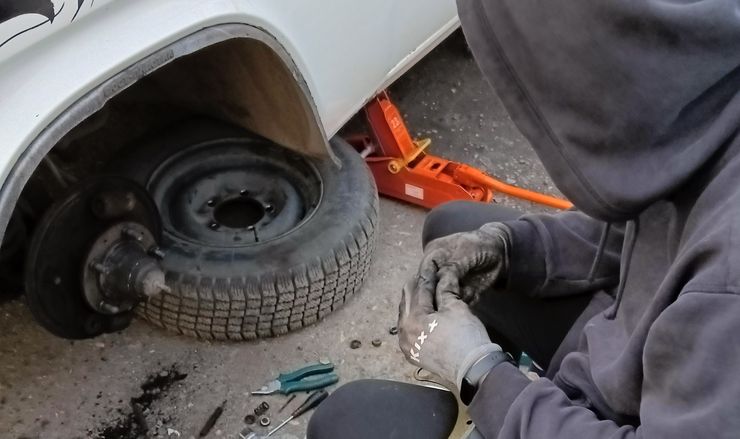Motorists overcome the “sunbeds” in different ways. Most crawl over them at a snail’s pace, although there are those who simply ignore them. But who is right? How should you drive over artificial bumps so as not to damage the suspension elements? The answer lies in the material of the AvtoVzglyad portal.
Russian roads are rich in various types of irregularities: both natural, including all kinds of deformations of the asphalt surface, and artificial – “speed bumps”, which are necessary to forcibly limit the speed of vehicles in particularly dangerous places. They irritate everyone without exception, but everyone’s approach to overcoming such obstacles is different: some slow down, others do not notice them.
Regardless of which way a motorist chooses to overcome road irregularities, he pursues a single goal – to protect the chassis. And to figure out who’s doing the right thing, you first have to figure out why the suspension is necessary in the first place. The answer is simple: dampen vibrations and reduce stress on the body. And now another question: how long should the elements and components of the chassis last?
Any engineer will tell you that the life of an entire unit or system depends on its weakest link. For suspension, these are wheel bearings. If we are talking about a high-quality part, and not a cheap fake that has not undergone any tests, then the bearing conscientiously copes with its task – withstanding axial or radial loads – from 2500 to 10,000 hours.
Let’s take the lower limit: 2500 hours. Using simple calculations, we find out that even the simplest, weakest and cheapest (but, we repeat, high-quality, that is, certified) bearings under constant load can last 104 days. Under constant! No breaks for weekends, lunch or other parking. But does this mean that the same “deckchairs” can be flown at normal speed?
Of course not, there is a limit to everything. If you are in a hurry, according to the traffic rules, reduce the speedometer needle to 20 km/h – this is enough. And better: up to 10-15 km/h: this is comfortable for both you and other road users. There is no point in reducing the speed to “near zero” values. Unless of course you have a super lowered car, where every slight increase is a serious challenge.
Russian roads are rich in various types of irregularities: both natural, including all kinds of deformations of the asphalt surface, and artificial – “speed bumps”, which are necessary to forcibly limit the speed of vehicles in particularly dangerous places. They irritate everyone without exception, but everyone’s approach to overcoming such obstacles is different: some slow down, others do not notice them.
Regardless of which way a motorist chooses to overcome road irregularities, he pursues a single goal – to protect the chassis. And to figure out who’s doing the right thing, you first have to figure out why the suspension is necessary in the first place. The answer is simple: dampen vibrations and reduce stress on the body. And now another question: how long should the elements and components of the chassis last?
Any engineer will tell you that the life of an entire unit or system depends on its weakest link. For suspension, these are wheel bearings. If we are talking about a high-quality part, and not a cheap fake that has not undergone any tests, then the bearing conscientiously copes with its task – withstanding axial or radial loads – from 2500 to 10,000 hours.
Let’s take the lower limit: 2500 hours. Using simple calculations, we find out that even the simplest, weakest and cheapest (but, we repeat, high-quality, that is, certified) bearings under constant load can last 104 days. Under constant! No breaks for weekends, lunch or other parking. But does this mean that the same “deckchairs” can be flown at normal speed?
Of course not, there is a limit to everything. If you are in a hurry, according to the traffic rules, reduce the speedometer needle to 20 km/h – this is enough. And better: up to 10-15 km/h: this is comfortable for both you and other road users. There is no point in reducing the speed to “near zero” values. Unless of course you have a super lowered car, where every slight increase is a serious challenge.
Source: Avto Vzglyad
Donald Salinas is an experienced automobile journalist and writer for Div Bracket. He brings his readers the latest news and developments from the world of automobiles, offering a unique and knowledgeable perspective on the latest trends and innovations in the automotive industry.














